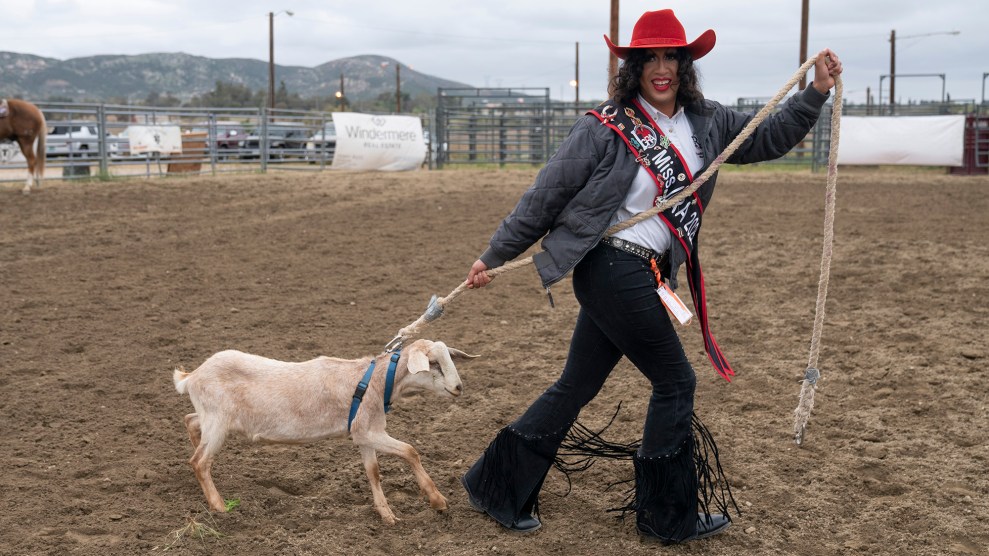
Photo: Florentine Films
It’s got the obligatory Tom Hanks voice-overs, the black-and-white footage with overdubbed sound effects, and the octogenarians reminiscing in dimly lit rooms, but Ken Burns’ The War isn’t your typical World War II documentary. The seven-part, 14-hour series, which starts on PBS on September 23, is unusually harrowing, filled with unfamiliar and graphic footage of combat and death. It is so intense that Burns says some viewers have come out of screenings with “their own little post-traumatic stress issues.” Yet like all elements of a Burns production, the gore is nothing if not handled meticulously. “Every time we show a human being that is not alive in this film, we thought really hard about whether we should show or not show it,” he explains. “When we show it to veterans, you’re never quite sure what they’re going to think. They usually say, ‘This is as close to what I remember as anything I’ve ever seen; please leave all these horrible things in it.'” Burns, the director of The Civil War, Brooklyn Bridge, and more than a dozen other films, recently spoke with Mother Jones about why he wanted to take a hard look at the “Good War.”
Ken Burns: One of the things that pushed me over the top to do this film is that we are losing 1,000 veterans a day. I’m in the memory business, and this is a hemorrhage of memory that is just too difficult for me to countenance. Someone once said that the death of a man was like the loss of a library. It’s a collection of all of these histories that go away as each person dies.
Mother Jones: This film is really about the war from a purely American perspective.
KB: It’s even more limited. It isn’t America—it is just four towns. We’ve just taken a few representative stories in these towns and let them stand in for all of the experiences. We get to know the towns; we know the specific addresses where people live. And then we follow the sons off to hell. The Second World War has been so encrusted with the sense of safety—it was the “Good War;” everything is black and white. We forget that it is in fact the worst war ever. We wanted to show what it was like, unmediated by the celebrity of generals and presidents and statistics and Nazis, and instead show it from the bottom up, what the real experiences were for the 40 or so people that we met in these towns.
MJ: The film’s tagline is “In extraordinary times there are no ordinary lives.” What do you think about the whole idea of “the greatest generation”?
KB: I think “the greatest generation” becomes part of the calcification of the Second World War. I mean [Tom] Brokaw did an amazing thing with his book. He got these reticent people who had never spoken to speak. He should be given a medal for that. But I think to the extent that it perpetuates this notion of the greatest, it is also the worst generation. They slaughtered 60 million people.
Ken Burns’ Watch List
“I watch as many documentaries as I can,” says Ken Burns, whose seven-part, 14-hour World War II epic The War starts on pbs September 23. “We are really in the golden age of documentaries right now.” Some of his recommendations of classic films and filmmakers worth seeking out:

1 Robert Flaherty’s groundbreaking Arctic silent Nanook of the North (1922)
2 John Grierson’s Night Mail (1936): “A beautiful film that followed the mail from Edinburgh, Scotland, to London, England. Just an amazing black-and-white film.”
3 Frederick Wiseman and John Marshall’s Titicut Follies (1967): “Still one of the best cinema vérité films of all time.”

4 Albert and David Maysles’ rockumentary Gimme Shelter (1970)
5 Errol Morris, director of The Thin Blue Line and The Fog of War: “I loved Errol Morris from the very beginning. I think he’s one of our great filmmakers.”

6 Jeff Blitz’s Spellbound (2002): “Amazing film about a spelling bee— who thought you could be at the edge of your seat worrying about that?”
7 Michael Moore: “You’d obviously want to study Michael Moore to understand how propaganda works.”
MJ: Did you feel like you were going up against the History Channel and other popular portrayals of World War II?
KB: Well, no. I’m disappointed by them. I think that we deserve, and more important, we need a much more complicated history. It’s not to say that [the History Channel] doesn’t do a great service day in and day out in communicating stuff about what went on. But I think we just need to understand that it doesn’t happen at that superficial level. Too many documentaries are just B-roll, the kind of convenient vamping with convenient images as you tell a story.
MJ: A lot of the footage and photos in the film are not the standard World War II stuff that we’re used to seeing. Were you trying to avoid the meanings already attached to those images?
KB: There’s an argument that those images are touchstones. I don’t think we consciously went through and said, “Oh, let’s not use that because it’s too well known.” In fact, we take a lot of very well-known images and use them in different ways. It’s less choice in selection of images; it’s how they’re engaged. Everybody who watches this film just thinks constantly of Iraq.
MJ: How do you expect people to react to the film in the context of the current war?
KB: It doesn’t come with an agenda; it’s not looking to pick a fight with Bill O’Reilly. It’s just looking to say, “We wish to honor the experience of these people.” I can show a clip reel to 1,100 dress-gray cadets at West Point and get two standing ovations and be at [San Francisco’s] Castro Theater a few weeks later, show the same clip reel, and get the same response. So what it tells us is that the small-p politics that preoccupies us is dwarfed by a larger artistic sensibility that can tolerate and even embrace contradictions. Right now we’re in the middle of war, and it barely influences people’s lives. And this was a war Americans were all together on. It can remind us of the myriad ways in which it’s possible for us to be together, to cohere as a people. There were no red states and blue states. Everybody was together. Everybody knew somebody who was in the war. Everybody suffered in some way. Arthur Schlesinger Jr., the historian, said there’s too much “pluribus” and not enough “unum.” And I think he’s right. I’ve spent all my life trying to talk about unum, the way in which we can be together rather than apart.
MJ: The war is a shared national experience, but as we saw with the recent controversy over the inclusion of Hispanic Americans in your film, people also want to claim parts of that history as their own. Do you see that as an inevitable conflict?
KB: Yeah, I mean, I can understand it. I think there was a misunderstanding of what our film was about. It wasn’t going to be all things to all people; it was more like a poem, not a textbook. But we’ve been able to find and identify some great stories that in no way alters our film but only supplement it and make it that much better. That’s the only way I could do it; otherwise it would have been kind of artificial. I’m in the story-making business and it’s a great experience to be told you have to make more stories.
MJ: Do you ever think about doing a film with a radically different style than the one you’ve been using for so long?
KB: That is a really great question. My style has eight elements: four oral and four visual. The visual would be the interviews, the footage, the live cinematography, and the still photographs. The oral dimensions are the third-person narration—”the voice of God”—the first-person chorus of voices, assorted readers, and then a complicated sound effects track to complement authentic music. Each one of my films engages these in varying degrees, so they seem to be radically different, you know? To those who say they’re the same, I have to remind them of the diversity and the authenticity of the style. Our whole culture is filled with people who desire change for the sake of change. And then you have unlistenable music, unwatchable art, unreadable books.
MJ: What do you make of the proliferation of digital technology both for making films and distributing them online?
KB: Digital technology has opened us up, but we still have to know how to tell stories. It’s not enough just to record them. One worry is YouTube attention deficit disorder, which erodes the single greatest thing we have, which is our attention. All meaning in the world accrues in duration, yet we have an environment which is encouraging this little bite thing. It’s not enough to watch Rodney King getting beaten or Britney Spears without underpants. We still have to learn how to synthesize the raw materials. That’s why it took me nearly seven years to make this film.
MJ: What do you think about the “Ken Burns Effect” on iPhoto?
KB: Steve Jobs called me up and said, “We’ve been trying to get this thing on iPhoto where we can zoom and pan, and we want to keep our working title, which is the ‘Ken Burns Effect.'” I told him I didn’t make product endorsements, so he gives me some equipment which we give to nonprofits. And it’s a big joke because I’m essentially a computer Luddite, and people walk out of Apple Stores asking me incredibly dense questions on how they can manipulate the “Ken Burns Effect.”

















